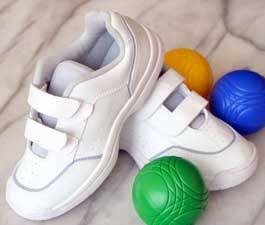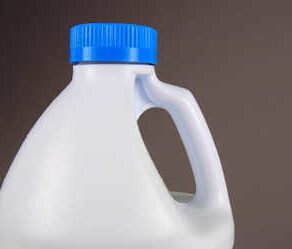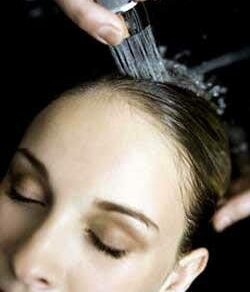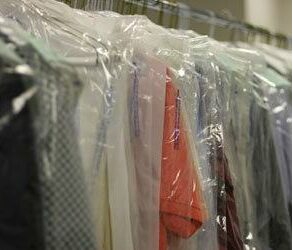
Bleach is a commonly used cleaning agent well known for its ability to remove stains and to sanitize. Bleach changes soil and stains found on fabrics and other surfaces into soluble particles so that they can be more easily cleaned away. The removal of these dirt and stain particles is what whitens and brightens clothing.
Types of Bleach
- Chlorine Bleach – The most powerful bleach available. This type of bleach must be diluted before using on fabrics. Otherwise, it will damage the fibers and cause them to weaken. This is often known as “eating through” the fabric. Though commonly used in liquid form, it is available in powdered form as well.
- Oxygen Bleach/All Fabric Bleach – This bleach contains hydrogen peroxide and is less harsh than chlorine bleach. While it still oxidizes stains and soil, it does not remove the color the way that chlorine bleach can.
How Bleach Removes Stains and Color
- The process of ‘bleaching’ involves several chemical reactions. Pigment molecules and dyes contain chromophores (The part responsible for the color). When oxidizing bleach comes in contact with these chromophores, it breaks the molecule down into a different substance (one that can be removed from the fabric, such as a stain), or creates a molecule with chromophores that do not show any color. (do not absorb visible light.)
- When using bleach to disinfect, the process is different. The sodium hypochlorite in bleach causes protein molecules to clump up and become one mass of particles. This mass of proteins kills itself off as its chemical structure breaks down.
Warnings
- Bleach mixed with ammonia creates harmful fumes. NEVER mix these two cleaning products.
- Though bleach is a harmful chemical, it quickly dilutes to harmless levels in sewage systems and the soil.
- Excessive hair bleaching can cause thinning or balding.
- Most bleaches are harmful if swallowed or ingested. Use all bleach products with care.
- Remove bleach from skin and eyes by washing with lots of water.
- If bleach is ingested, take note of the time, amount and what product was ingested. Do NOT induce vomiting. Contact your local emergency number. When bleach is diluted, there may not be a need to seek emergency assistance. However, stronger concentrations may cause more serious side effects that require medical help.
“Green” Alternatives
- Lemon Juicealso has bleaching effects.
- For stain removal, moisten the area with lemon juice and lay the garment in the sunlight.
- Mix lemon juice with cream of tartar to make a paste and apply to stained areas.
- Add a ½ cup of lemon juice to water and soak white clothing to brighten and whiten. Wash as normal.
- Mix lemon juice with baking soda to make a paste. Spread onto stains on hard surfaces and allow to set for several hours. Wipe away.
- Hydrogen Peroxide
- Hydrogen peroxide can be applied directly to many surfaces for cleaning and stain removal.
- Always test for colorfastness prior to applying to carpeting to clothing as hydrogen peroxide can also remove color.
- Oxygen Bleach is much gentler on the environment and often preferred over chlorine bleach.
- Borax is an option that is not as toxic and works well for cleaning and laundry purposes.
Tips for Using Bleach
- Always dilute bleach before adding any clothing or fabrics. Pour the bleach into the bleach dispenser or into the washing machine. Ensure it is completely mixed in BEFORE adding any clothing or fabric pieces.
- While bleach works well on many fabrics, it should never be used on silk, acetate, spandex, foam or rubber.
Did You Know?
- Liquid chlorine bleach has a shelf life of 6 months. After that, it is not effective at removing stains or sanitizing and needs to be replaced.
- Bleach contains a yellow dye that will transfer to white clothing with repeated use. This leads to a dingy color that many are trying to get rid of.









I need to know the best was to clean my husbands CPAP breathing machine mask and tube. The tube and mask is all plastic. Vinegar has been recommended but after research I found out vinegar does not kill germs.
I raise foster kittens and have been using a mixture of water, Dawn, and bleach. And then I rinse. Someone told me that Dawn would neutralize the bleach so the sanitation I thought I was getting is void.
I usually leave my mixture in a spray container and use it as needed. Sometimes it can sit for weeks. Is it still viable?
Thanks for answering both of my questions.
We have alpacas and after cleaning up their poop, we spray with a bleach-water mixture, about 1:10. Does that get rid of any parasites?
I bought a new bottle of bleach and it has large, whitish, chunky particles suspended in it. What would cause this and is it OK to use? Thanks.